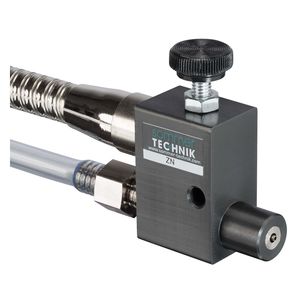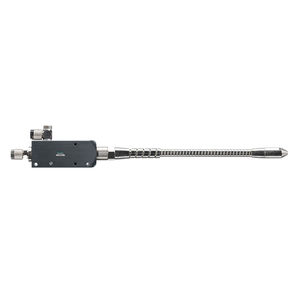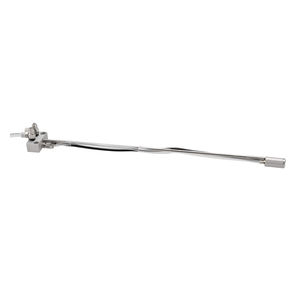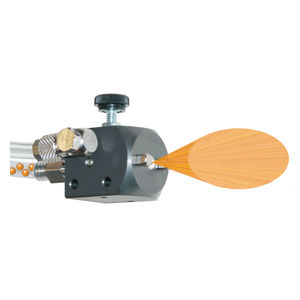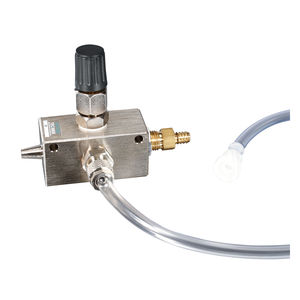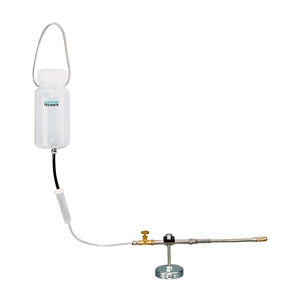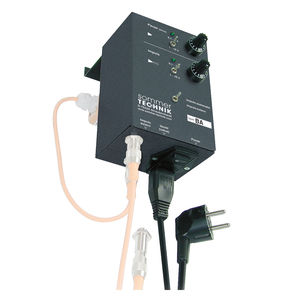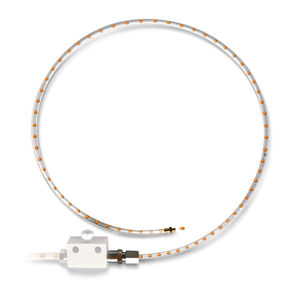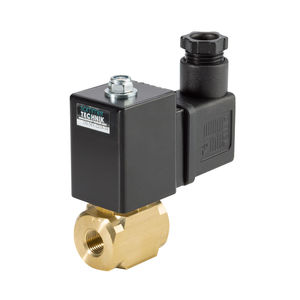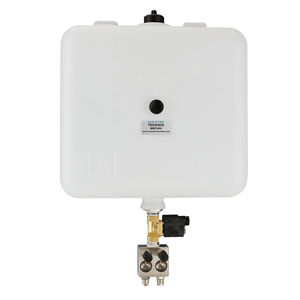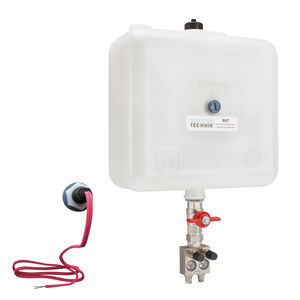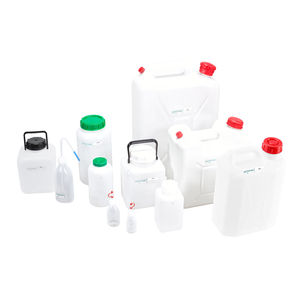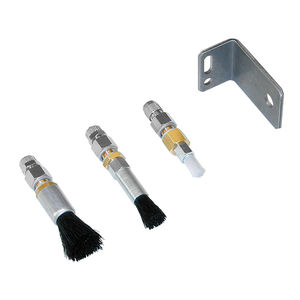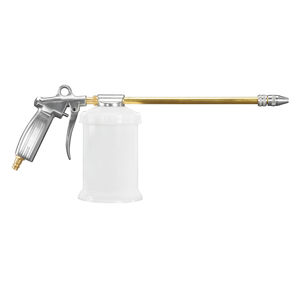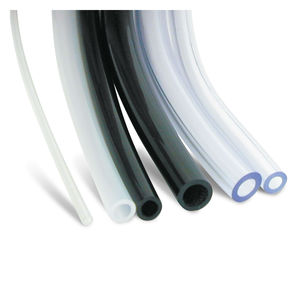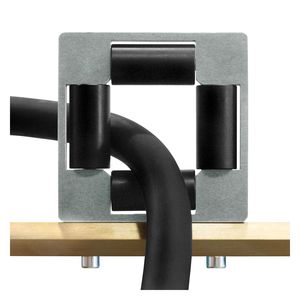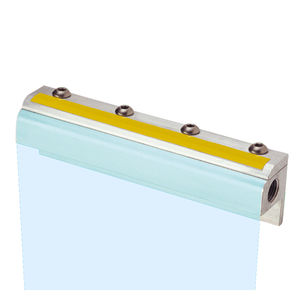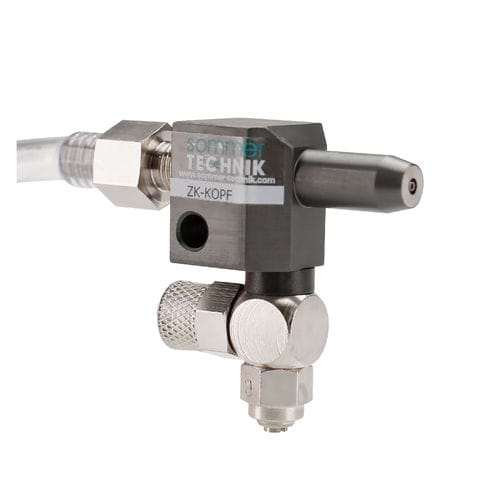
Spray atomizing nozzle ZK - KOPFfor liquidscompressed airanodized aluminum


Add to favorites
Compare this product
Characteristics
- Function
- spray
- Fluid
- for liquids, compressed air
- Material
- anodized aluminum
- Spray angle
- 30°
- Other characteristics
- compact
- Pressure
Min.: 3 bar
(43.5 psi)Max.: 8 bar
(116 psi)- Media temperature
Min.: -25 °C
(-13 °F)Max.: 80 °C
(176 °F)
Description
Good things come in small packages
Often there is not a whole lot of space available inside machines, which can cause technicians a lot of headaches - especially if a lubricating system has to be retrofitted.
The compact design of this atomizer (18 x 30 x 15 mm - without fittings) makes it suitable for use in even the tightest spaces.
How it works:
The fluid hose is either laid into a pressure-free tank or connected. The atomizer should always be fixed a little above the maximum fluid level in the tank. With compressed air applied, the atomizer will instantly start to spray (a built-in check valve in the hose prevents the fluid level from dropping too fast). The atomizer can be actuated either permanently or on a cycle base by a control unit (e.g. BA) – but always in well-metered quantities.
The fluid is properly and economically fed into the centre of the air stream.
With the air and fluid choke (see picture) the amount of air and fluid is finely adjustable.
Technical data:
Material: - - Anodized aluminum, nickel-plated brass
Operating pressure: - - 3 - 8 bar (the higher the pressure, the finer the spraymist and the smaller the spray angle.)
Measuring examples for suction volume for 1 min. at 20 °C:
ISOVG150 - - 2.1 ml at 5 bar compressed air
- - 1.9 ml at 3 bar compressed air
- -
Water - - 62 ml at 6 bar compressed air
- - 48 ml at 5 bar compressed air
- - 30 ml at 3 bar compressed air
Catalogs
Related Searches
- Fitting
- Piping
- Hydraulic fitting
- Screw-in fitting
- Pneumatic fitting
- Metal fitting
- Polymer hose
- Flexible flexible piping
- Sommer-Technik spray nozzle
- Sommer-Technik liquid nozzle
- Polymer fitting
- Water flexible piping
- T type fitting
- Socket fitting
- Reinforced hose
- PVC hose
- Steel hose
- PU hose
- Air flexible piping
- Oil-resistant hose
*Prices are pre-tax. They exclude delivery charges and customs duties and do not include additional charges for installation or activation options. Prices are indicative only and may vary by country, with changes to the cost of raw materials and exchange rates.



